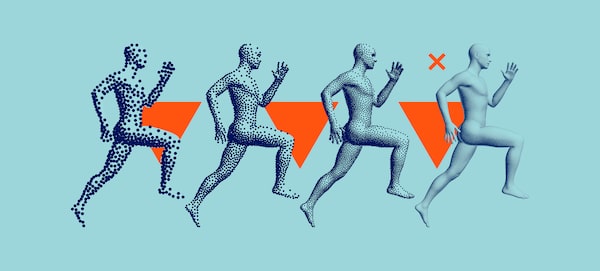
Is the hype around bio-hacking worth the cost of admission?iStock/iStockPhoto / Getty Images
How much money would you pay to have the muscles, metabolism and energy of a 20-year-old? It’s the kind of question that used to be reserved for underperforming philosophy students or the expository monologue at the end of an action flick. But in the past few years, tech giants, supplement companies and wellness gurus have been working to make folks physically younger, selling the idea that with the right gadgets, pills and routines your body can reverse its biological age.
With stats saying the longevity industry is worth almost US$320-million, it’s an idea that a lot of people are buying into.
Enter biohacking, a catch-all term for experiments used to improve your body’s functions. This includes everything from DIY scientists injecting themselves with gene-editing tools to wannabe cyborgs implanting microchips under their skin to health nuts practising intermittent fasting.
While its origins trace back to the late eighties, biohacking rose to prominence throughout the early aughts, with Silicon Valley types performing experiments on themselves in the hope of optimizing their efficiency. Working on the fringes of conventional medicine, biohackers aimed to push the boundaries of the bodies’ perceived limitations. Among the committed, those limitations include both aging and death itself.
Lately, ideas about biohacking and longevity have been trickling into the mainstream through fitness and wellness circles.
In Toronto, gym and fitness studio Sweat and Tonic is positioning itself at the vanguard of the movement, bringing a number of different biohacking tools under one roof. Club Transcend – an exclusive membership it offers, costing $1,000 a month – presents a number of services, including cryotherapy and red-light treatments alongside exercise classes and personal training. According to David Ingram, founder of the club, all of these things in tandem can help with body restoration.
“Obviously it’s not going to be affordable for the majority of people but the membership appeals to those who take their health and wellness very, very seriously,” said Ingram.
Are the treatments worth the price tag? And can they really make you feel younger? Cryotherapy puts subjects in extreme cold, exposing them to temperatures of -130 C for a short duration. Supposedly this helps with inflammation and even boosts metabolism.
Red-light therapy uses low wavelength red light on the body to help with skin conditions and increase circulation, among other claims.
While anecdotally folks may feel better after using both treatments, more research is needed to prove if they’re effective. On a broader scale, the idea of deeming someone physically younger than their actual age is hard to qualify in a meaningful way. Leaders in the space have been using data to try and back up their claims.
InsideTracker, a wellness brand with the goal of helping people “live healthier longer,” analyzes the blood of their clients using 17 different biomarkers. With that information they’re able to determine a patient’s biological age – referred to as their InnerAge – giving feedback on everything from hormone levels to inflammation. Using that number, the team makes personalized recommendations about nutrition, exercise and lifestyle.
With each test costing US$250-$350, the info doesn’t come cheap. But according to Dr. Gil Blander – the chief scientific officer and co-founder of InsideTracker – the investment is more than worth it for anyone serious about extending their lifespan.
The Cambridge-based company is trying to “potentially slow down the aging process,” said Blander. “InnerAge is a tool that helps you understand what’s truly going on inside your body and provides an individualized road map to optimal wellness.”
The tests serve two main purposes: arming folks with health info that can otherwise feel nebulous while simultaneously gamifying that info. By optimizing their biomarkers – often by something as simple as moving more or taking vitamins – users get a better score on their blood test, showing an inner age that aligns with their health goals.
It’s an extension of the way people chase higher numbers of daily steps or record sleep patterns on phones, tracking data points for a better version of themselves. Using bloodwork to correct vitamin deficiencies or resolving to get more exercise can definitely make a positive impact on your health. But skeptics aren’t so sure biohacking in its various forms can really lead to longevity. Without unified data points across the board, it’s hard to objectively qualify their real effect on our bodies.
Many experts – such as professor Charles Brenner, a global expert in biology, chemistry and metabolism with the City of Hope National Medical Center – have asserted that uncritical press coverage and weak research papers have propelled the movement forward, with people putting in real money for things that ultimately lead to limited impact.
“I don’t foresee technological developments that will significantly extend maximum life expectancy and I certainly don’t foresee eternal life. Scientists who promote such innovations greatly exaggerate the ability to extend life expectancy, and they will continue to promise too much and deliver too little,” he said in an interview with Calcalist.
Knowing whether the treatments actually do what they claim is by its very nature a long game, but for the true believers, putting faith into the promise of longevity feels more than worth the gamble. The payoff could be worth a lifetime, if you can afford it.